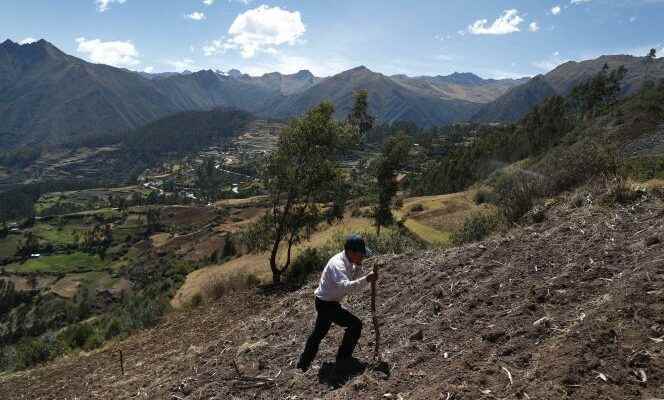Standing in front of the communal plot, farmer Porfirio Vasquez, in his sixties, carefully scrutinizes the tractor seeder which is executing long back-and-forth movements, digging regular furrows. Around him, about twenty people, women, men are present while the children play alongside them. Work in the fields is still largely collective here: from the sharing of labor to the rental of agricultural machinery. In a few months, the ears will give chocolate white, a variety of giant corn with grains the size of beans.
In the “Sacred Valley” of Cuzco (south-east of the country) – which was once the food granary of the Incas (1438-1533) and which still ensures food security for the inhabitants of the region – the sowing season began at the beginning of august. From here, several tons of cereals will come out, mainly corn, intended for the country and for export, as well as fruits and vegetables. Traditional agriculture, with its plows drawn by oxen, coexists with semi-intensive cultivation which makes extensive use of chemical inputs.
These are at the heart of farmers’ concerns. In particular urea, the main fertilizer consumed in Peruvian agriculture. “Their price has tripled since last year”, laments Mr. Vasquez. A consequence of the supply difficulties generated by the Covid-19 pandemic, then by the Russia-Ukraine war – Russia being the world’s leading exporter and Peru’s main supplier of this fertilizer.
“Unprofitable” activity
“The 50 kilo bag of urea went from 70 soles [18 euros] in 2021 to about 240 today”, says Porfirio Vasquez. A production cost that weighs on the fragile family savings, making their activity ” unprofitable “. On March 19, the government declared the agrarian sector in a state of emergency for 120 days. A measure, extended since December 31, which should make it possible to release emergency aid: allocation of inputs, financial credits, equipment. The president, Pedro Castillo, notably promised a fund of nearly 1 billion soles (260 million euros) to guarantee the purchase of nitrogen fertilizers.
But after two failed purchase attempts on international markets, the farmers ultimately received nothing. On Friday September 2, the government announced a subsidy to facilitate the purchase of fertilizer which should be paid to 370,000 producers from September 18. For many farmers, it will already be too late for the season, and this will not calm their anger. Major strikes in the sector have shaken several regions of the country in recent months. The last, on July 18 and 19, brought together half a million farmers with the slogan: “Saving the 2022-2023 crop year. »
You have 59.71% of this article left to read. The following is for subscribers only.
